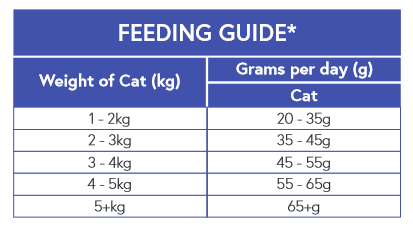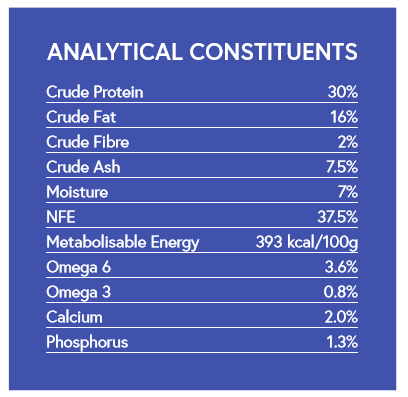
Choosing the right cat food can be a daunting task with so many options available in the pet food aisle. However, it is crucial to make an informed decision to ensure your feline friend receives the necessary nutrients for their health and well-being. In this article, we will provide expert tips on how to choose the best cat food for your furry companion.
By following these tips, you can learn how to read and understand cat food labels, avoid harmful ingredients, and focus on essential nutrients. With this knowledge, you can confidently choose the best cat food for your feline friend’s unique needs and preferences.
Key Takeaways
- Learn how to read and understand cat food labels
- Avoid harmful ingredients and focus on essential nutrients
- Choose the best cat food for your feline friend’s unique needs and preferences
What to Look for on a Cat Food Label
When shopping for cat food, it is important to read the label carefully to ensure that you are providing your feline friend with the right nutrition. Here are some important things to look for on a cat food label:
- Ingredients: Check the list of ingredients to ensure that the cat food contains high-quality protein sources, such as meat, poultry, or fish. Avoid products that list “by-products” or “meal” as the main ingredient, as these are often low-quality protein sources. Also, make sure that the cat food does not contain any harmful additives or preservatives.
- Nutritional Information: Check the nutritional information on the label to ensure that the cat food provides a balanced diet. Look for products that meet the nutritional standards set by the Association of American Feed Control Officials (AAFCO).
- Feeding Guidelines: Follow the feeding guidelines on the label to ensure that you are providing your cat with the right amount of food. Overfeeding can lead to obesity and other health problems, while underfeeding can result in malnutrition.
- Brand Reputation: Choose a cat food brand with a good reputation for quality and safety. Look for brands that have been in business for a long time and have a proven track record of producing high-quality cat food.

Learn the Label vocabulary
When it comes to choosing the right food for your cat, reading the label is crucial. Here’s a guide to help you understand the vocabulary commonly used on cat food labels.
Product Name
The product name is the first thing you’ll see on a cat food label. It should clearly state what type of food it is, such as “dry” or “wet,” and what flavor it is, such as “chicken” or “salmon.” Be wary of vague or misleading names, such as “dinner” or “flavor,” which may not contain much of the named ingredient. And be aware that terms like “gourmet” and “premium” are not regulated and don’t necessarily mean the food is of higher quality.
Net Weight
The net weight tells you how much food is in the package. This is important to know so you can calculate how much to feed your cat and how long the food will last.

Statement of Purpose or Intent
The statement of purpose or intent explains what the food is intended to do, such as “maintenance” or “weight control.” This can help you choose the right food for your cat’s needs.
Ingredient List
The ingredient list is a breakdown of all the ingredients in the food, listed in order of weight. Look for high-quality sources of protein, such as chicken or fish, as the first ingredient. Avoid foods that list “by-products” or “meal” as the main ingredient, as these are lower quality sources of protein.

Guaranteed Analysis
The guaranteed analysis lists the minimum or maximum levels of certain nutrients in the food, such as protein, fat, and fiber. This can help you compare different foods and choose the one that best meets your cat’s nutritional needs.
Feeding Directions
The feeding directions tell you how much food to give your cat based on their weight and activity level. Follow these guidelines closely to avoid overfeeding or underfeeding your cat.
Note that such directions are to be considered general guidelines, not rules. Ask your veterinarian for specific instructions.
Nutritional Adequacy Statement
The nutritional adequacy statement tells you whether the food meets the minimum nutritional requirements set by the Association of American Feed Control Officials (AAFCO) for cats at a specific lifestyle and age of cat the food is intended. For example, is it for growing kitties or full-grown felines?
Statement of Responsibility
The statement of responsibility indicates who is responsible for the food, such as the manufacturer or distributor. This can be helpful if you have any questions or concerns about the food.
It’s important to note that pet food regulations and requirements may change over time. Always check the most current regulations and guidelines from the FDA and AAFCO to ensure
Harmful Ingredients to Avoid in Cat Food
When it comes to choosing the right cat food for your furry friend, it’s important to know how to read cat food labels. One of the most crucial aspects of reading cat food labels is understanding which ingredients to avoid. Here are some harmful ingredients commonly found in cat food that you should steer clear of:
| Ingredients to Avoid |
|---|
| Artificial preservatives |
| Artificial flavors |
| Artificial colors |
| Meat by-products |
| Corn, wheat, and soy |
| Carrageenan |
| BHA and BHT |
| Ethoxyquin |
Artificial preservatives such as BHA, BHT, and ethoxyquin are added to cat food to extend its shelf life. However, these preservatives have been linked to cancer and other health issues in cats. Artificial flavors and colors are also harmful to cats and can lead to digestive problems and allergic reactions.
Meat by-products are low-quality animal parts such as beaks, feet, and intestines that are unfit for human consumption. They are often used in cat food as a cheap source of protein, but they lack the essential nutrients that cats need to thrive.
Corn, wheat, and soy are often used as fillers in cat food, but they provide little nutritional value for cats. These ingredients can also cause digestive problems and allergic reactions in cats.
Carrageenan is a thickening agent that is often added to wet cat food. However, it has been linked to intestinal inflammation and other health issues in cats.
Tip 1: Choose the Right Cat Food for Your Feline
When it comes to selecting the ideal cat food, your feline friend’s life stage plays a significant role. Before making your choice, carefully examine the nutritional adequacy statement provided on the product’s packaging. This statement conveys whether the food is suitable for your cat’s specific life stage, accounting for their developmental period.
The statement will specify if the food is intended for cats, kittens, or all life stages. It might also mention growth and maintenance, growth and reproduction (for breeding cats), or indoor and outdoor cats. It’s vital to remember that there’s no one-size-fits-all food that suits all cats.
Pet nutritionist Angele Thompson, PhD, advises that you select food tailored to your cat’s specific needs. Avoid the mistake of feeding kitten food to adult cats or vice versa, as the nutritional requirements differ. Opt for the appropriate food that matches your cat’s life stage for optimal health.
Tip 2: Decipher Cat Food Labels
When shopping for cat food, the product name displayed on the front of the packaging can be misleading. To make informed decisions about your cat’s diet, it’s essential to understand the three critical rules that pet food manufacturers adhere to when naming their products.
Rule #1: If a product’s name reads “Tuna Cat Food” or “Chicken Cat Food,” it must contain a minimum of 95% of the named ingredient, excluding moisture content. In the case of products with two ingredients, such as “Chicken and Fish Cat Food,” there should be more of the first-named ingredient, but together, they must total 95%. Always inspect the ingredients list to ensure that the primary ingredient is, indeed, the main component of the food.
Rule #2: Beware of the word “dinner” in the product name. If the food contains less than 95% meat or fish but more than 25%, a qualifier like “dinner,” “entrée,” “formula,” or “platter” must be added to the product name. In these cases, carefully read the ingredients list to verify the primary ingredient in the food. For instance, a product named “Chicken Cat Dinner” may contain more fish than chicken.
Rule #3: When the product name includes the word “with,” the manufacturer is only obliged to include 3% of the named ingredient in the food. For instance, “Cat Food with Tuna” may contain very little tuna compared to “Tuna Cat Food.” Exercise caution when choosing a product with “with” in the name and always scrutinize the ingredients list.
Tip 3: Understanding Cat Food Ingredients
When examining cat food labels, it’s crucial to focus on the ingredients list, which is ordered by weight, with the heaviest components listed first. Notably, one of the most common ingredients in cat food is meat. However, it’s vital to understand the nuances of what “meat” signifies. Meat encompasses the cleaned flesh of various animals, including chicken, lamb, turkey, cattle, and related animals raised for animal feed. This includes muscle, fat, nerves, and blood vessels from the skin, the heart, esophagus, and the tongue.
Cat food frequently includes meat by-products, comprising clean, non-flesh parts from the same animals. These encompass the blood, bone, brain, liver, lungs, liver, kidneys, emptied stomach, and intestines. It’s worth noting that there are no hooves, hair, horns, or teeth in meat by-products. For example, chicken by-products are devoid of feathers.
Additional ingredients in cat food include beef tallow, a fat derived from beef, and meal, which consists of finely ground tissue. The bone meal comprises finely ground bone from slaughtered feed animals, while a fish meal is composed of clean, ground, undecomposed whole fish or fish pieces. This fish may or may not still contain fish oil.
Cat food also frequently contains corn products, with ground corn being simply chopped or ground corn kernels and corn gluten meal forming as a byproduct of corn syrup or starch production.
While meat is an important component in cat food, it’s not the sole ingredient. It’s crucial to look for a well-balanced combination of components that will supply your cat with the necessary nutrients for a healthy and content life.
Tip 4: Prioritize Nutrients Over Ingredients
When selecting cat food, it’s easy to become engrossed in the ingredients list. However, as Sherry Sanderson, DVM, PhD, from the University of Georgia, College of Veterinary Medicine, points out, “Animals require nutrients, not ingredients.” Rather than focusing solely on the ingredients, it’s essential to prioritize the nutritional value of the end product.
To gauge a cat food’s nutritional value, pay attention to the “Guaranteed Analysis” printed on the label. This section enumerates the nutrients contained in the cat food.
